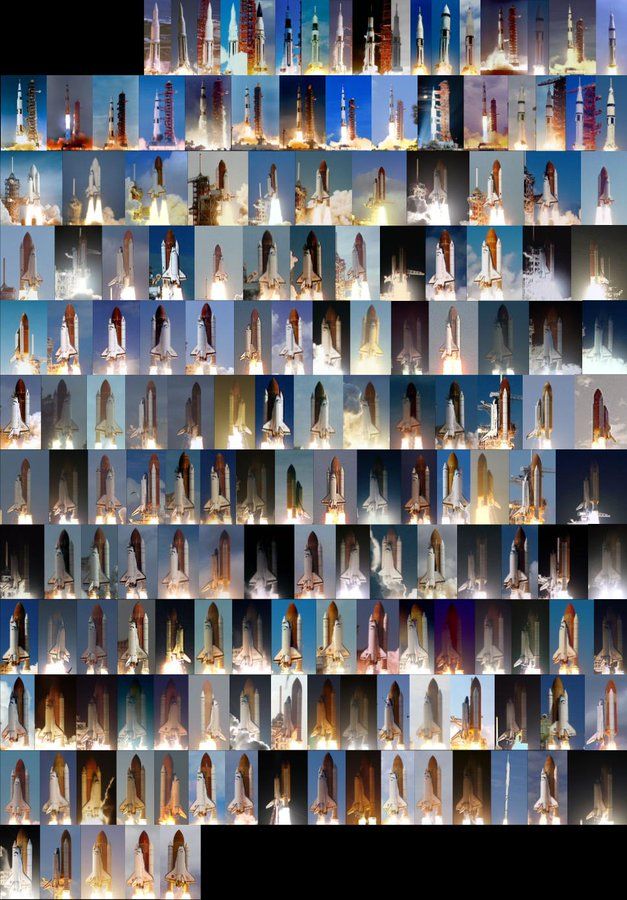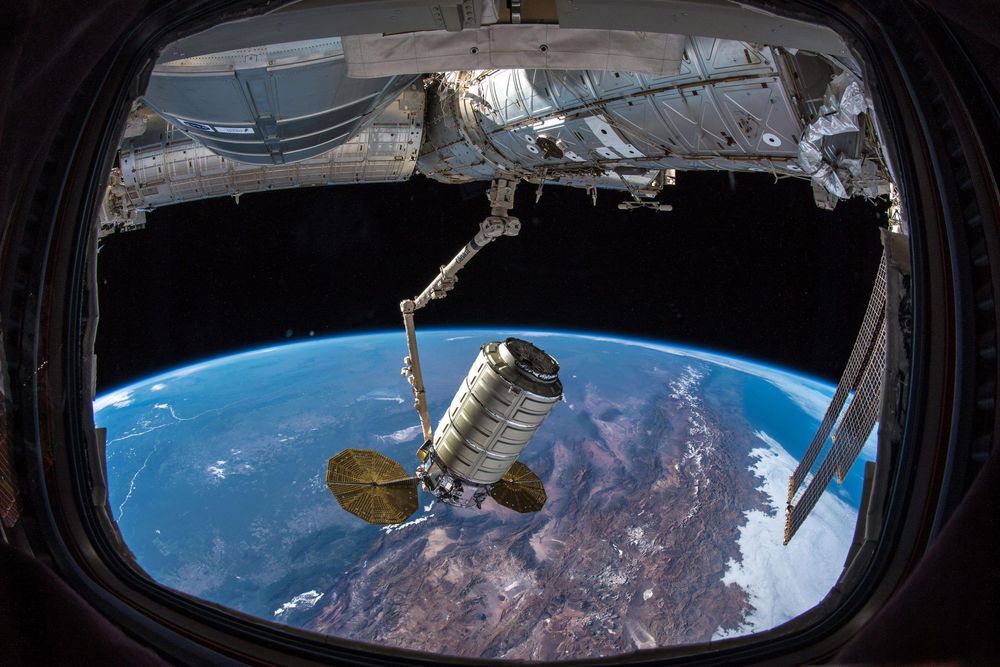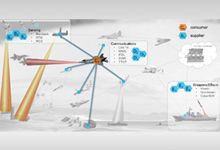See how technology built for @Space_Station could advance humanity’s access to nutrition. #SpaceStation20th



The U.S. #military, like many others around the world, is investing significant time and resources into expanding its electronic #warfare capabilities across the board, for offensive and defensive purposes, in the air, at sea, on land, and even in space. Now, advances in #machinelearning and #artificialintelligence mean that electronic warfare systems, no matter what their specific function, may all benefit from a new underlying concept known as advanced “Cognitive Electronic Warfare,” or #Cognitive EW. The main goal is to be able to increasingly automate and otherwise speed up critical processes, from analyzing electronic intelligence to developing new electronic warfare measures and countermeasures, potentially in real-time and across large swathes of networked platforms.
The holy grail of this concept is electronic warfare systems that can spot new or otherwise unexpected threats and immediately begin adapting to them.

China is pushing ahead with developing a giant Low Earth Orbit (LEO) satellite constellation competing with SpaceX, Amazon and OneWeb, according to the Washington DC-based analyst Bhavya Lal and California State University’s Professor Larry Press.
Press, professor of information systems at the California State University, mentioned a recent Chinese spectrum filing in a blog of the CircleID website. China “has filed a spectrum application with the International Telecommunication Union for two constellations with the cryptic names GW-A59 and GW-2″ for a total of 12,992 satellites, Press said.
“We heard about an announcement of a constellation with nearly 13,000 satellites,” Bhavya Lal said in SpaceWatchGlobal’s Space Café webtalk last week. Lal is a senior space policy analyst at the IDA Science and Technology Policy Institute in Washington DC and was in the lead for IDA’s recently published report “Evaluation of China’s Commercial Space Sector”.
“Out of around 20 Chinese companies engaged in satellite communications, fewer than a half dozen have proposed constellations,” Lal summarized the report’s findings. “Many focus on narrowband communications, targeting markets such as the Internet of Things (IoT).” Companies considering satellite broadband at an early stage include LinkSure and Galaxy Space, Lal said, while state-owned enterprises such as CASIC and CASC “have the deeper pockets needed to more rapidly launch satellite constellations”.
Regarding the not state-owned enterprises (SOE’s) “we found that these broadband companies are all very early-stage, still in the R&D phase, and do not have much in the way of hardware to launch,” Lal said. “However, as in other areas, the Chinese are making fast progress. The best we can tell the current focus of most companies is domestic. But as the Chinese have done in other areas such as high-speed rail, it would be not a stretch of the imagination that once the bugs in the system are worked out domestically, the Chinese will begin to market services internationally.”

They say if you spread out all the gold ever mined from the Earth in all of history, it would only cover a football field 18 inches deep.
Now when you wrap you mind around that image, it doesn’t seem like very much, especially when you digest the fact that the solar system is literally brimming with gold but scientists can’t quite figure out where all this hard-to-make metal is being created.

At 5:32 a.m. EDT today Chris Cassidy captured Northrop Grumman’s Cygnus cargo craft as Ivan Vagner of Roscosmos monitored monitored the approach and rendezvous. Read more… go.nasa.gov/3nibn6m.

Mars, our second closest cosmic cousin, has been in our collective imagination for decades. Between fantasies of martian visits and the promise of water under its icy surface, Mars doesn’t need to do much to be in our collective good books.
But very soon, Mars is not just going to be close to our hearts, but also nearest to our actual planet — a mere 62.1 million kilometres (38.6 million miles) away from Earth.
This is the closest it’ll be for the next 15 years. And it means that stargazing is highly recommended as Mars will be bright, big and easy to see with or without a telescope.

Even the most optimistic estimates of neutron star collision frequency can’t account for the sheer abundance of gold and other elements in the Universe. This was a surprise. It looks like spinning supernovae with strong magnetic fields could be the real source of the majority of these elements.” ates of neutron star collision frequency can’t account for the sheer abundance of gold and other elements in the Universe. This was a surprise. It looks like spinning supernovae with strong magnetic fields could be the real source of the majority of these elements.” ates of neutron star collision frequency simply can’t account for the sheer abundance of gold and other elements in the Universe.

Science typically begins with a question. It may be: “How will astronauts maintain a nutritious diet on long-duration missions?” Or “How can the way metals are made be improved by studying them in space?” These are just two of the questions researchers seek to answer with the upcoming launch of new research, technology demonstrations, and commercial products headed to our unique microgravity laboratory orbiting Earth.
NASA uses the spaceflight environment to further our understanding of how to successfully live and work in space. These space experiments help us understand the effects of radiation, microgravity and other factors on life and physical systems. It is also an important aspect in understanding how to sustain life on the Moon and eventually Mars.
On Friday, October 2, 2020, at 9:16 p.m. EDT, new space experiments and a new space toilet launched on Northrop Grumman’s 14th commercial resupply mission for the agency to the International Space Station.

Fourteen podcast episodes with great guests talking about a wide range of fascinating aerospace and astronomy topics, with more to come! Thanks to all my listeners and for your loyal support. Stay tuned! And follow the podcast wherever you listen to podcasts or directly at brucedorminey.podbean.com.

Two DARPA-developed technologies – a novel decision aid for mission commanders and a rapid software integration tool – played a critical role in the recent Air Force demonstration of the Advanced Battle Management System (ABMS).
The Adapting Cross-domain Kill-webs (ACK) program and the System-of-systems Technology Integration Tool Chain for Heterogeneous Electronic Systems (STITCHES) were among a number of technologies employed in the Aug. 31 – Sep. 4 ABMS on-ramp demonstration, which involved attacks using live aircraft, ships, air defense batteries, and other assets.
ACK is developing a decision aid for mission commanders to assist them with rapidly identifying and selecting options for tasking – and re-tasking – assets within and across organizational boundaries. Specifically, ACK assists users with selecting sensors, effectors, and support elements across military domains (space, air, land, surface, subsurface, and cyber) that span the different military services to deliver desired effects on targets. Instead of limited, monolithic, pre-defined kill chains, these more disaggregated forces can be used to formulate adaptive “kill webs” based on all of the options available.